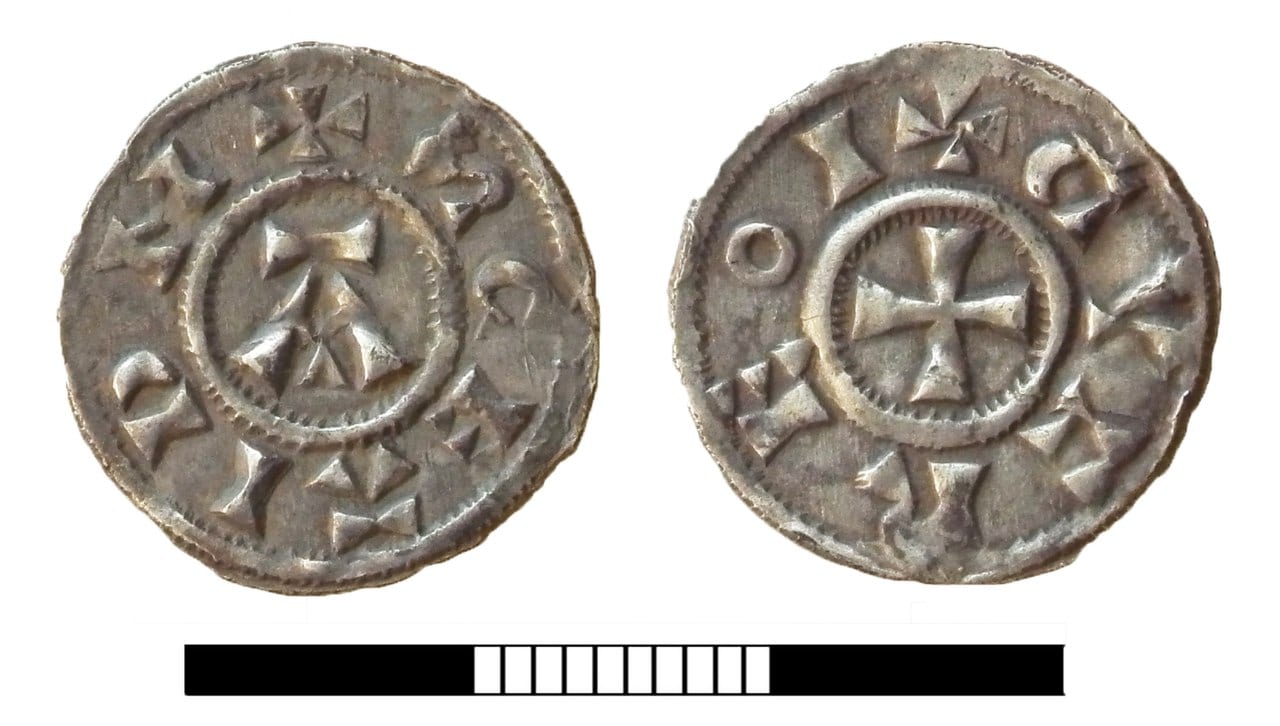For decades, an argument has been cropping up that Columbus was likely not the first European to make it to the Americas. People believed the Icelandic sagas that spoke of Vikings landing on land green, and lush, and full of grapes, and thought they must have been talking about Canada, but perhaps they’d even landed as far south as what would become the United States.
Many, if not most, of the claims to have found proof of these visits, though, have been debunked – but there’s no consensus from experts on whether or not the mysterious 11th century coin found by amateur archaeologists Guy Mellgren and Ed Runge found on the coast of Maine in 1956.

Image Credit: Maine State Museum
They initially found stone chips, knives, fire pits, and some other artifacts on a natural terrace about eight feet above the high tide line of the day. They, along with the help of some professional archaeologists, unearthed the coing the following summer.
For 20 years, Mellgren described the coin as being minted in 12th century England – which would have been strange as well – but as Mellgren never sought wider attention for his find (this will be important later), it wasn’t until 1978 that the find made its way into publication.
A dealer in London was the one who saw the photo and new immediately the coin hadn’t come from England. Mellgren died two weeks before the coin’s re-identification as a mid-11th century Norse penny hit the news.
Experts from around the world descended, wondering not for the first time if they’d found evidence for Viking contact with North American, pre-Columbus. Prior to Mellgren’s coin, only the items excavated at L’Anse aux Meadows, in Newfoundland, are thought to be authentic.
Since 1978, no one has really questioned the coin is an authentic Norse penny from medieval Scandinavia, but the debate continues to rage as to how, exactly, it might have landed on Maine’s shore. Even Kolbjorn Skaare, a Norwegian expert on Viking-age coins, agreed it was an authentic Norwegian penny from the second half of the 11th century.

Image Credit: Unsplash
He saw a “dark-grey, fragmentary piece,” that was a little less than two-thirds of an inch in diameter, with a cross on one side with two horizontal lines. On the other side was an “animal-like figure in a rather barbarous design,” with a curved throat and hair like a horse’s mane.
As to how it got in that particular place, most believed it had either passed through the hands of traders, possibly when Norse explorer Leif Eriksson was there through a winter. Others figured it could be yet another hoax, and that one of the “discoverers” had obtained the coin through other avenues and planted it at the site.
The coin didn’t look like others from the era that had been circulated, though, and it was more worn than was typical, too. That, combined with the fact that Mellgren never sought notoriety for his find, let most experts to come down on the side of the coin being a genuine discovery.
Some, like anthropologist and archaeologist Edmund Carpenter, disagreed. He said that 1957 was “a bumper year for Viking fakes.” The year before, a book called Explorations of America Before Columbus had been published, other de-bunked artifacts had been displayed in London, and in the book, the author described the Viking Thorwald Eriksson catching sight of Maine’s Mount Desert Island…which was just across the bay from where Mellgren discovered his coin.

Image Credit: Surrey County Council
Carpenter found the coincidence “remarkable” and couldn’t believe others didn’t, as well. He noted as part of his skepticism that Mellrean collected coins as a hobby, and also worked part-time at an auction house, so he could have plausibly come across a Norse coin in one of these places. Mellgren also had a documented interest in pre-Columbian contact.
There’s evidence on both sides, though the former chief archaeologist of Maine State’s Museum believed that the “balance of evidence argues it’s an honest find.”
More recently, a renowned numismatist at the University of Oslo took another look at where the coin may have originated, and published in the Journal of the North Atlantic.
“The pennies of this type, class N, are rare by any standard.”
He notes that even among the most common source of medieval Viking coins, only a small percentage are this particular type of coin. Major finds around the globe contain no pennies of this type, in fact.







